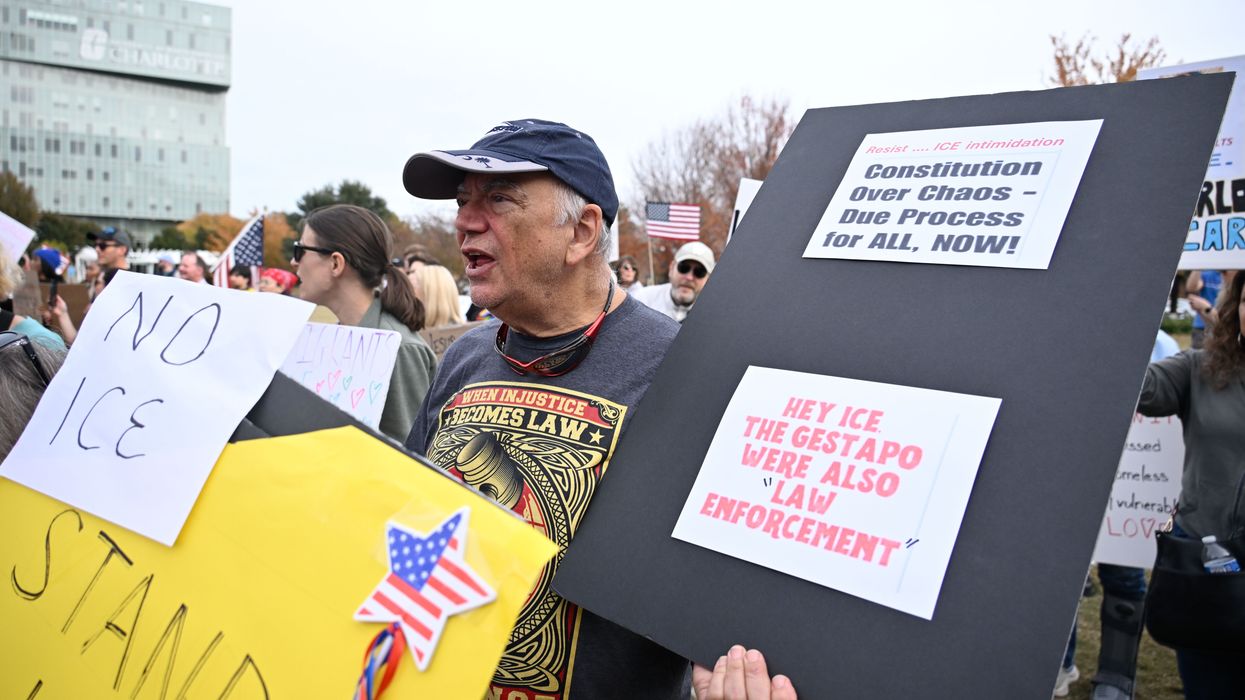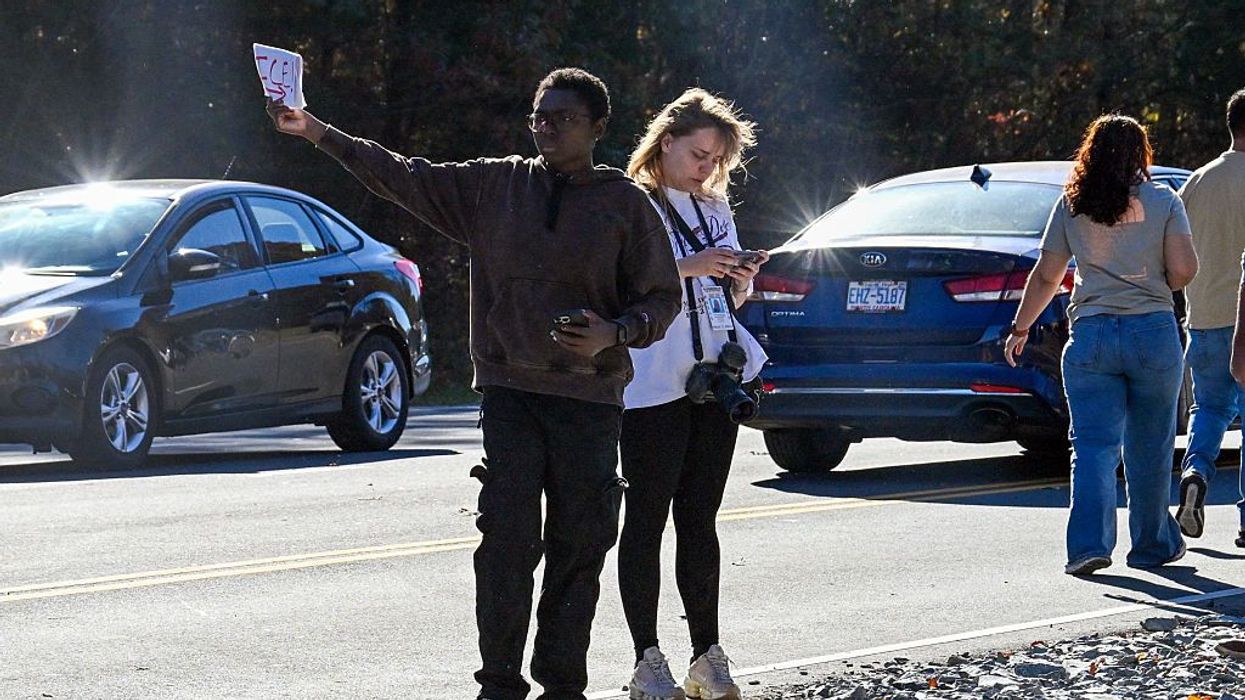Charlotte’s Web, Redeployed: A Children’s Tale in the Hands of Power
White’s literary legacy is rooted in empathy, care, and the affirmation of life; the bureaucratic appropriation of his title stands in stark, almost satirical contrast to the world he sought to illuminate.
Growing up, there were a few books that left an indelible mark on me. Charlotte’s Web was one of them. Tolerance. Embracing those who are different. Overcoming fears. Seeing miracles in the ordinary. Having faith in the goodness of our neighbors. Love.
So when I saw that a federal immigration sweep in Charlotte, North Carolina had been named Charlotte’s Web, I felt a sharp, immediate repulsion. They were being clever—but how many of them had actually read the book? How different this country might be if more people absorbed its lessons: that protecting the vulnerable is an act of courage, not political theater.
Elwyn Brooks White (July 11, 1899-October 1, 1985) was an American writer whose work has endured across generations. He authored beloved children’s books, including Stuart Little (1945), Charlotte’s Web (1952), and The Trumpet of the Swan (1970). In a 2012 survey of School Library Journal readers, Charlotte’s Web ranked first among the top 100 children’s novels. Beyond children’s literature, White contributed to The New Yorker and co-authored The Elements of Style, the iconic English-language style guide. Kurt Vonnegut described him as “one of the most admirable prose stylists our country has so far produced.”
It is in this context—of a writer celebrated for clarity, humanity, and moral vision—that the repurposing of Charlotte’s Web for a mass immigration raid becomes especially jarring. White’s literary legacy is rooted in empathy, care, and the affirmation of life; the bureaucratic appropriation of his title stands in stark, almost satirical contrast to the world he sought to illuminate.
Charlotte herself, the real Charlotte, not the bureaucratic parody, spins her web to protect, not punish. She acts out of friendship, not force.
On a quiet Saturday in Charlotte, 81 people were arrested in roughly five hours as federal agents conducted a phase of the Trump administration’s nationwide immigration crackdown. Officers swept neighborhoods near churches and apartment complexes. Streets were unusually empty, businesses shuttered, and families stayed home, unsure whether their neighbors, or the law, could be trusted.
Gregory Bovino, the North Carolina-born Border Patrol commander leading “Operation Charlotte’s Web,” posted on X a quotation from the story’s ending, when Charlotte’s children float away on the wind:
Wherever the wind takes us. High, low. Near, far. East, west. North, south. We take to the breeze, we go as we please.
The irony is almost literary. In White’s story, the line is a meditation on freedom, impermanence, and the continuity of life, Charlotte’s children carried safely into a larger world after she has saved the pig. In Bovino’s hands, it frames a mass roundup, turning human beings into objects carried off by a bureaucratic breeze.
White himself described the inspiration behind Charlotte’s Web:
The theme of Charlotte’s Web is that a pig shall be saved, and I have an idea that somewhere deep inside me there was a wish to that effect.
Martha White, who manages her grandfather’s literary estate, made clear that his ethos could not be more distant from these raids. E.B. White “certainly didn’t believe in masked men, in unmarked cars, raiding people’s homes and workplaces without IDs or summons,” she told CNN, adding, “He didn’t condone fearmongering.” He believed in due process, in the rule of law, and in the basic dignity of life.
The spectacle of the Charlotte operation extended to social media, where detainees’ faces and alleged criminal histories were posted as proof of public safety. Here, White’s words carry a sting:
Trust me, Wilbur. People are very gullible. They'll believe anything they see in print.
Activists handed out whistles to warn neighbors of Immigration and Customs Enforcement presence. Community members skipped work, school, and medical appointments. One dental clinic alone reported nine cancellations.
“Latinos love this country. They came here to escape socialism and communism, and they’re hard workers and people of faith,” said Paola Garcia, spokesperson for Camino, a nonprofit serving Charlotte’s Latino community. “They love their family, and it’s just so sad to see that this community now has this target on their back.”
Nikki Marín Baena, co-director of immigrant advocacy group Siembra NC, called the operation “a shameful day for the North Carolina Republican Party,” noting the celebration of what she described as “terrorist operations” and the recycling of Bovino’s rhetoric about “going after criminals.”
Before Saturday, the largest number of immigrant arrests in a single day in North Carolina was 30. Eighty-one in five hours—nearly triple the previous record, underscores the unprecedented scale of federal enforcement in a city already trembling with fear.
White wrote:
All that I hope to say in books, all that I ever hope to say, is that I love the world.
And Charlotte herself, the real Charlotte, not the bureaucratic parody, spins her web to protect, not punish. She acts out of friendship, not force:
You have been my friend. That in itself is a tremendous thing. I wove my webs for you because I liked you… By helping you, perhaps I was trying to lift up my life a trifle. Heaven knows anyone’s life can stand a little of that.
The contrast is stark. Charlotte’s web lifts; the raids constrict. The story teaches mercy; the sweep instills fear. Charlotte’s purpose is care; the operation’s purpose is spectacle. As White noted elsewhere:
One of the most time-consuming things is to have an enemy.
Here, millions of hours of planning, messaging, and social-media framing were devoted to constructing enemies, while the human cost, fear, disruption, and trauma, remained largely invisible.
White’s fascination with animals and mortality lent his work an “eerie quality,” and he often described books themselves as “sneezes,” unexpected, uncontainable eruptions of human empathy. In Charlotte, North Carolina, this real-life web demonstrates the inverse: a calculated, coldly measured maneuver, a bureaucratic sneeze that spreads fear instead of care:
The world is full of talkers, but it is rare to find anyone who listens. And I assure you that you can pick up more information when you are listening than when you are talking.
The authorities talked. They posted. They broadcast. But they did not listen. Families stayed home. Children missed school. Communities watched one another with suspicion. Safety, in the administration’s terms, was achieved only at the expense of freedom. And yet, White reminds us:
Safety is all well and good: I prefer freedom.
This is Charlotte’s enduring lesson: the value of life, the importance of compassion, the courage to act out of love. Freedom, dignity, and human connection cannot be suspended at the altar of political performance. The people caught in this web may be removed, but their absence leaves a void that no number of arrests can fill.
Charlotte’s web, whether in a children’s book or in our daily lives, asks us to choose differently. To see, to listen, to protect. To be, as White’s story quietly insists, the kind of neighbor, and the kind of nation, that spins webs of care instead of cages.

